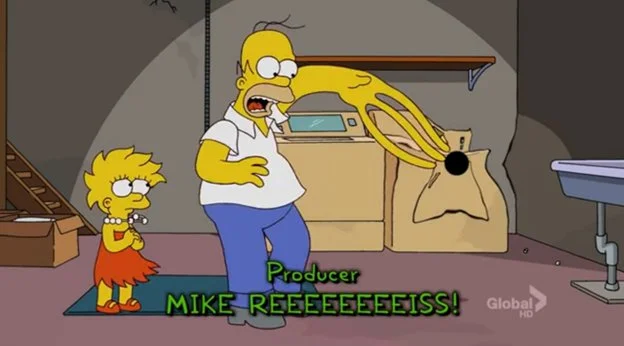3 May 2024
Zirconium is a chemical element with atomic number 40 and the symbol Zr. It is a lustrous, gray-white metal. The mineral zirconium silicate, also known as zircon, is common in the earth’s crust and has been known since antiquity. Zirconium has a variety of commercial uses, and zircon crystals are considered gemstones.
The etymology follows a rather tortuous route. Zircon is a modern borrowing from the German, which is itself a borrowing from the Italian giargone (fourteenth century), which in turn comes from the Old French jacunce. (In the thirteenth century, Middle English borrowed the French word, forming jacincte and jagounce, but these words didn’t survive into modern English.) The French root comes from the Latin hyacinthus, which in turn is from the Greek ὑάκινθος (hyakinthos). The European words are related to the Arabic الزركون (al zarqūn), although the nature of that connection is uncertain.
In Greek myth, Hyacinthus was a Spartan prince and lover of Apollo. According to Ovid’s Metamorphoses, the two were competing in throwing the discus, but Apollo’s throw accidently struck the prince, killing him. The flower grew on his grave. The hyacinth gemstone is so called because it has the color of the flower.
The modern German Zircon appears by 1780 in Axel von Cronstedts Versuch einer Mineralogie:
Dieser Stein ist gewönlich ponceau oder hiazinthenroth, welches sich zuweilen etwas ins gelbe, zuweilen mehr ins rothe, und oft auch ein wenig ins braune zieht. Selten fömt er von weisser Farbe (Zircon) vor.
(This stone is usually ponceau or hyacinth-red, which sometimes turns a little yellow, sometimes more red, and often also a little brown. Rarely it appears white in color (zircon).)
But it was Martin Klaproth, in 1789, who first identified zirconium as an element, which he dubbed Zirconerde:
Welche eine angemessenere Benennung veranlassen mögten, an ihr fennen lernen wird, den Namen Zirconerde, (Terra circonia) ben.
(Those who would like to use a more appropriate name will learn from it to use the name zircon-earth (Terra circonia).)
Zircon made its way into English in 1794 in Richard Kirwan’s Elements of Mineralogy in the form circon:
Jargonic Earth, or Jargonia.
This earth hath been discovered by Mr. Klaproth; it has as yet been found only in the stone called Jargon, or Circon, of Ceylon, of which more hereafter.
This earth resembles argill more than any other earth, though it differs essentially from it in some respects. Its colour is white, and its specific gravity probably exceeds 4,000.
(Jargon here is another variant of the mineral name and unrelated to the linguistic term.)
But it was Humphry Davy who, in 1808, dubbed the element zirconium:
From the general tenor of these results, and the comparison between the different series of experiments, there seems very great reason to conclude that alumine, zircone, glucine, and silex are, like the alkaline earths, metallic oxides, for on no other supposition is it easy to explain the phenomena that have been detailed.
The evidences of decomposition and composition, are not, however of the same strict nature as those that belong to the fixed alkalies and alkaline earths; for it is possible, that in the experiments in which the silex, alumine, and zircone appeared to separate during the oxidation of potassium and sodium, their bases might not actually have been in combination with them, but the earths themselves, in union with the metals of the alkalies, or in mere mechanical mixture. And out of an immense number of experiments which I made of the kind last detailed, a very few only gave distinct indications of the production of any earthy matter; and in cases when earthy matter did appear, the quantity was such as rendered it impossible to decide on the species.
Had I been so fortunate as to have obtained more certain evidences on this subject, and to have procured the metallic substances I was in search of, I should have proposed for them the names of silicium, alumium, zirconium, and glucium.
Sources:
Cronstedt, Axel Fredrik. Axel von Cronstedts Versuch einer Mineralogie, 1.1. Leipzig: 1780, 162. Google Books.
Davy, Humphry. “Electro-Chemical Researches, on the Decomposition of the Earths; with Observations on the Metals Obtained from the Alkaline Earths, and on the Amalgam Procured from Ammonia” (30 June 1808). Philosophical Transactions of the Royal Society of London, 98, 1808, 333–70 at 352–53. DOI: 10.1098/rstl.1808.0023.
Kirwan, Richard. Elements of Mineralogy, second edition, vol. 1. London: J. Nichols for P. Elmsly, 1794, 14. HathiTrust Digital Archive.
Klaproth, Martin H. “Chemische Untersuchung Des Zircons.” Der Gesellschaft Naturforschender Freunde Zu Berlin, 9. 1789, 147–176 at 171. Universität Bielefeld Universitätsbibliothek.
Middle English Dictionary, 2019, s.v. jacinct(e, n., jagounce, n.
Miśkowiec, Pawel. “Name Game: The Naming History of the Chemical Elements—Part 1—From Antiquity till the End of 18th Century.” Foundations of Chemistry. 1 November 2022. DOI: 10.1007/s10698-022-09448-5.
Ovid. Metamorphoses, book 10. David Raeburn, trans. London: Penguin, 2004, 390–92.
Oxford English Dictionary, third edition, March 2021, s.v. zirconium, n., zircon, n.; second edition, 1989, s.v. jargon | jargoon, n.2, jacounce | jagounce, n., jacinth, n., hyacinth, n.
Image credits: zircon, Don Guennie, 2011, Wikimedia Commons, used under a Creative Commons Attribution-Share Alike 4.0 International license; hyacinth, Alexander Kiselyov, late nineteenth century, National Museum in Warsaw, Wikimedia Commons, public domain image as a mechanical reproduction of a public domain work







